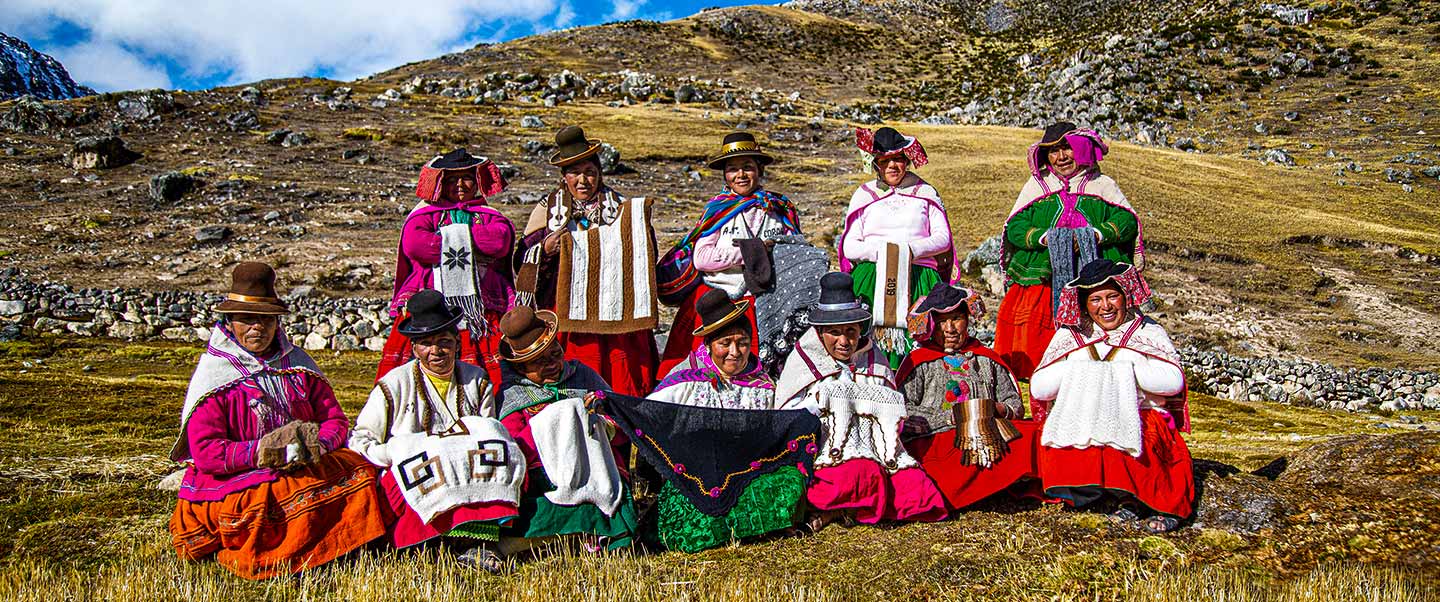Notas
Alpaca Fiber
Friday, 7 de March de 2025Alpaca fiber: Uncover the value chain from softness to well-being
From the delicate softness of the fiber to the sustainability of its production, every step in the process aims to bring out the highest quality in the final product.
Alpaca fiber is renowned worldwide for its softness, lightness, and durability — qualities that make it highly sought after in the luxury textile industry.
In Peru, the alpaca is one of the most treasured resources, valued for both its cultural heritage and economic significance. According to MIDAGRI, Peru is home to 80 % of the world’s alpaca population, with over 5 million animals, primarily found in the regions of Puno, Huancavelica, Arequipa, Cusco, and Apurimac.
 Source: Asociación-Internacional-de-la-Alpaca-(AIA)
Source: Asociación-Internacional-de-la-Alpaca-(AIA)
The alpaca fiber value chain
Breeding
The production of alpaca fiber starts with breeding the animals at elevations above 3,800 meters, where the harsh climate helps develop their exceptionally fine coat.
The truth is, proper alpaca care is essential for producing high-quality fiber. Both small breeders and large companies follow sustainable management practices to protect the animals' health and preserve the environment. Balanced nutrition is equally important, as it directly impacts the fiber’s fineness and consistency.
Shearing
Shearing techniques play a key role in determining fiber quality, and it is essential to prevent skin injuries that could harm the alpacas' health. Peruvian breeders have perfected specialized methods to maximize both the quantity and quality of the fiber. Shearing typically takes place between October and April, during the rainy season in the high Andean regions.
Categorization
After shearing, the fiber is carefully sorted by fineness — a crucial step in the value chain. Fineness, measured in microns (µm), determines the fiber’s final use and falls into four categories: extra-fine, fine, semi-fine, and coarse.
Gathering
This stage involves collecting the fiber and preparing it through a series of processes, including washing, carding, combing, and spinning.
Sorting
At this stage, experienced classifiers carefully sort the fleeces by hand. Their expertise ensures accurate categorization into various quality grades, including super baby alpaca, baby alpaca, alpaca fleece, medium alpaca fleece, alpaca huarizo, coarse alpaca, and short alpaca.
Washing
The fiber is washed in mechanical vats using hot water, detergents, and sodium carbonate in varying concentrations. This process removes soil, grease, organic impurities, and any foreign matter from the skeins.
Carding, combing, and spinning
Carding involves a series of mechanical processes designed to gradually open, separate, and clean the fibers, ultimately forming a loose strand or ribbon.
Combing, as the name suggests, aligns and unifies the fibers to create a smooth, even strand. Spinning then involves several steps: steaming the bobbins, resting and drying the yarn, dyeing, setting the yarn, and finally twisting it to achieve the desired texture and strength.
Weaving and knitting
At this stage, the yarn is transformed into finished garments through knitting or weaving. The process includes designing, cutting, sewing, washing, steaming, and finishing to ensure the final product meets quality standards.
 Source: PROMPERÚ
Source: PROMPERÚ
SAFETY CULTURE
The alpaca fiber value chain plays a vital role in the well-being of Peruvian Andean communities. According to MIDAGRI, over 120,000 alpaca-raising families rely on this activity, making fiber production a crucial source of income and economic stability.
During the 2023–2024 season, 300 tons of alpaca fiber were recorded, generating sales of over 10 million soles. This benefited 48 alpaca organizations across Puno, Huancavelica, Arequipa, Cusco, and Apurimac.
To prevent diseases and reduce alpaca mortality during the frost and low-temperature season, MIDAGRI has distributed 21,000 veterinary kits to small producers across 88 provinces in the regions of Ancash, Apurimac, Arequipa, Ayacucho, Cusco, Cajamarca, La Libertad, Huancavelica, Huanuco, Junin, Lima, Moquegua, Pasco, Puno, and Tacna.
In this way, alpaca fiber is more than just a source of income for Peru — it is a symbol of sustainability and well-being, especially with the rising global demand for high-quality, natural fibers in the textile industry.
.jpg)


